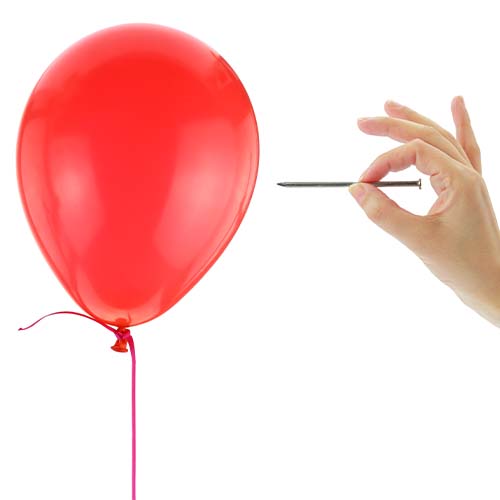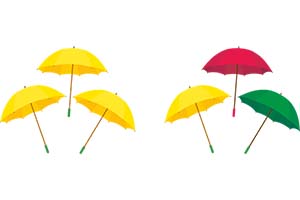Prep. Lesson 13. Longer and shorter sounds
Prior learning: None
Duration: 30 minutes
Materials: Tuned and unturned percussion
Keywords: Beat, singing, chanting, partners, rhymes, circle games
Difficulty: ![]()
 Melodic development
Melodic development
![]() Students add a new song to their repertoire.
Students add a new song to their repertoire.

- Students are seated and attentive.
- Sing the song slowly whilst moving your arm up for so and down for mi.
- Ask students to sing along with you and to move their arms up and down following you.
- Repeat until secure.
- This song will be used in several future lessons.
 Game
Game
![]() Students enjoy this classic circle game.
Students enjoy this classic circle game.

- Students sit in a circle and sing as one "kitty cat" walks around, tapping their friends on the head in time with the music.
- When the song concludes, the "kitty cat" selects a "grumpy cat owner" who must chase and catch the cat before they return to their seat.
 Rhythmic development
Rhythmic development
![]() Students sing and put the beat on their bodies.
Students sing and put the beat on their bodies.
- The learning intention of this song is for the class to find the beat using body movements and employing their arms, hands and fingers.
- Teach the song to the class, who are seated.
- The class sing the song once.
- Then, ask, “ Show me the beat on your knees.” The students now sing the song while tapping their knees to the beat of the song
- Ask, “ Where else can we keep the beat? A student might respond, “ On our ears” (or perhaps "on our heads, etc.)
- The class now sing the song while gently tapping their ears.
- Repeat with another student and with as many variations as possible.
 Activities
Activities
![]() Students explore and identify long and short sounds in a variety of activities.
Students explore and identify long and short sounds in a variety of activities.
Long and short instrument sounds
- Place a glockenspiel and a clave (or similar classroom instruments) on a table in full view of the class. Ask for a volunteer.
- Explain that some sounds are longer and some sounds are shorter.
- Tell students they will hear a sound by the volunteer striking a bar firmly on the glockenspiel and letting the sound ring out.
- Ask the class how long the sound lasts by counting and moving their hands apart. Repeat with another student volunteer.
- Tell the class they will hear a sound using a clave or woodblock. A volunteer strikes the clave. Ask the students to count how long the sound lasts.
- Ask students if they can hear the difference in the sound length compared to a glockenspiel. Which has the longest sound?
- Ask what other instruments can make long and short sounds.
Triangles
- Students discover that the duration of sounds can vary while using the same instrument, like a triangle or a chime bar.
- Show them how striking a resonating instrument can create a prolonged sound, but if the instrument is touched by hand, it is interrupted and becomes brief.
- Invite a volunteer to showcase long and short sounds using the triangle following the demonstration.
- Encourage students to express these variations in sound through extended body movements, such as sweeping arm gestures, or through brief body percussion actions like clapping or performing patschen.
- Encourage students to discuss the differences between long and short notes. Ask what they've observed or what questions they may have. This will help deepen their understanding of the concept and foster their curiosity.
- This engaging and interactive lesson will help students understand the differences between long and short sounds and how they can be represented through body movements and instruments.
Long and short vocal sounds
- Guide students through an exercise to help them understand the difference between long and short sounds and how they can be represented through body movements.
- Start by producing short consonant vocal syllables like 't', 'k', 'b', and others. Encourage students to imitate you, practising their ability to create these short sounds.
- Demonstrate that clapping or patting can represent short sounds. Have students practice clapping or patting along with the short consonant sounds they've just learned.
- Next, introduce extended vowel sounds like 'oooh' and 'ahhhh'. Ask students to repeat these sounds, focusing on their longer duration than consonant sounds.
- Engage the class in discussing the differences between the long vowel and short consonant sounds they've practised.
- As you create a long sound, gradually spread your hands apart to represent the lengthening sound visually.
- For short sounds, bring your hands closer together. Request that the class follow along with your movements, connecting the sounds they've practised with corresponding body movements.
Clap and sway
- Have students stand and form a large circle and explain that they will use their bodies to represent long and short sounds.
- Strike a note firmly on a tuned percussion instrument, such as a chime bar, and as the note decays, slowly sway your arms above your head. Inform the students that this movement shows a long note. Repeat this process several times, prompting the children to mimic your actions.
- Next, tell the class they will clap with you as you play a series of short notes on a clave or a similar instrument. The children should clap with your performance, learning that brief movements, like clapping, represent short notes.
- Encourage a discussion among the students about the differences between long and short notes, and ask what they've observed or what questions they may have. This will help deepen their understanding of the concept and foster their curiosity.
 Listening
Listening
![]() Students listen to sounds to identify if the sounds are longer or shorter.
Students listen to sounds to identify if the sounds are longer or shorter.
 Part work
Part work
![]() Students visually identify familiar objects and imitate the sound vocally. Is the sound longer or shorter?
Students visually identify familiar objects and imitate the sound vocally. Is the sound longer or shorter?




 Video
Video
![]() Students watch and listen to Dasha Duck and Kody Koala explore long and short sounds.
Students watch and listen to Dasha Duck and Kody Koala explore long and short sounds.
Suggested lessons
 Farewell
Farewell
![]() Reinforces students' pitch ability through listening, imitation, and repetition. 'Good morning' or 'Bee, Bee, Bumblebee' are good examples.
Reinforces students' pitch ability through listening, imitation, and repetition. 'Good morning' or 'Bee, Bee, Bumblebee' are good examples.
Prep. Lesson 14. Faster and slower sounds
 Students learn that sounds can be faster or slower. AC9AMUD01
Students learn that sounds can be faster or slower. AC9AMUD01
Prep. Lesson 15. Same and different
 Students learn that sounds can be the same or different. AC9AMUD01
Students learn that sounds can be the same or different. AC9AMUD01
Prep. Lesson 16. Rhythm patterns I
 Students learn that sounds can be in patterns. AC9AMUFP01
Students learn that sounds can be in patterns. AC9AMUFP01
